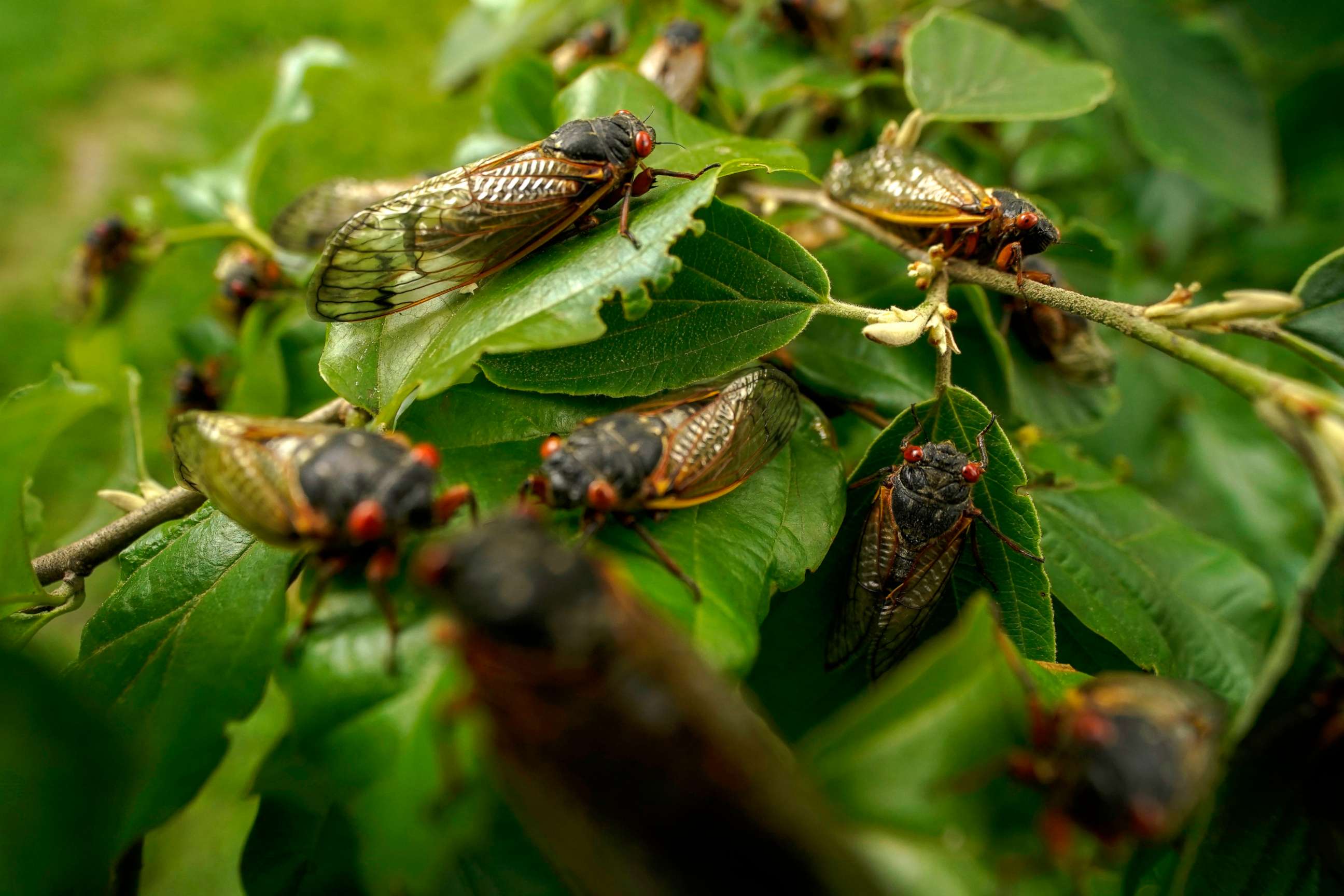Cicada cookbook draws attention to food insecurity
"I've even made them into full pecan pies."
Since the beginning of June, Brood X cicadas have delayed a White House press flight, been blamed for a car crash in Ohio and shown up on weather radar over Maryland. And the noisy insects' next trip could be to a dinner table near you.
Prior to the last Brood X emergence in 2004, University of Maryland graduate student Jenna Jadin wrote a cookbook full of recipes that use cicadas, called "Cicada-licious: Cooking and Enjoying Periodical Cicadas."
"I thought it was a great way to make these cicadas, which people seem to be afraid of, less scary," said Jadin. "Because when you can pluck something off the ground and eat it, it's a little bit less terrifying."
The cookbook, which is available online, includes a variety of recipes ranging from Cicada Dumplings, to "El Chirper" Tacos, to "Chocolate Chip Trillers."
"The ones I've eaten the most are the pecan tartlets, or I've even made them into full pecan pies," Jadin told ABC Audio.
She added that the insects work better in dishes with more flavorful ingredients because the bugs taste bitter on their own.

"They're pretty tannic, because they've been living underground and drinking sap from plants and trees for years, so they are quite bitter," she said.
Periodical cicadas spend 13 to 17 years maturing underground, surviving only on nutrients from the surrounding soil and trees. Once the ground reaches the right temperature in their final year, the baby cicadas, or "nymphs," dig themselves out of the dirt, shed their skin and set about their next task.
"Once they come out as adults, they have one basic job and that's to mate," said George Washington University biology professor John Lill.
Brood X is the biggest group of periodical cicadas, which is why they are so prominent this year.
But the cookbook is intended to go beyond tacos and pecan pies. Jadin is a science program manager for the United Nations, where she focuses on issues of food insecurity, specifically "insects, in general, as a food source."
She said a big part of stamping out hunger could come from resisting the urge to stamp out bugs.
"Overall they are a much more sustainable way of feeding the planet -- whether that be in western societies, developing countries, or wherever," she said.
Relatively speaking, insects can convert food into protein more efficiently than other animals. The U.N.'s Food and Agriculture Organization estimates crickets can produce the same amount of protein as cattle with just one-sixth the feed.
"You're putting a lot fewer resources into getting much more protein. You're also putting less water in, you're generally putting in less energy," said Jadin.
When it comes to cicadas, Jadin advised against simply grabbing a handful off the ground for a snack.
"Really, when we talk about eating insects, it's about ones that are farmed sustainably, that are easy to replicate," she said. "I wouldn't necessarily encourage going out to eat a ton of a wild insect because we're threatening their populations."
The Food and Drug Administration says those with shellfish allergies should avoid eating cicadas because the two species are related. And even if one is inclined to get cooking with some cicadas, Jadin warns that some of her recipes haven't stood the test of time.
"Some of them I would definitely rewrite now. Cicada rhubarb pie -- don't do that one," said Jadin.
Hear ABC's Leighton Schneider and Mike Dobuski report:




